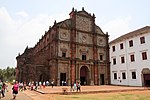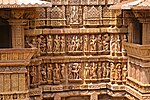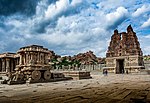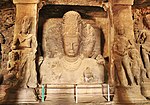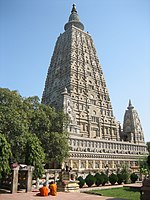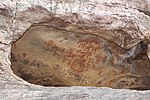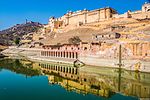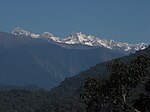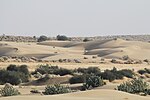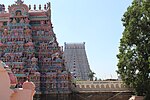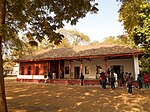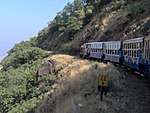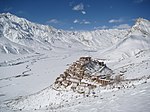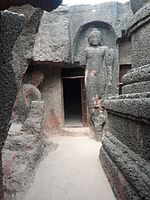- Green dots indicate the seven clusters (39 sites in total) in the Western Ghats
- Blue dots are the Hill Forts of Rajasthan
- Yellow dots are the Great Living Chola Temples
- Orange dots are the Sacred Ensembles of the Hoysalas
- Pink dots indicate the Mountain Railways of India
- Turquoise dots indicate cities with multiple sites. Agra, Mumbai and Delhi have three sites each, Jaipur has two.
The United Nations Educational, Scientific and Cultural Organization (UNESCO) designates World Heritage Sites of outstanding universal value to cultural or natural heritage which have been nominated by countries which are signatories to the UNESCO World Heritage Convention, established in 1972.[1] Cultural heritage consists of monuments (such as architectural works, monumental sculptures, or inscriptions), groups of buildings, and sites (including archaeological sites). Natural features (consisting of physical and biological formations), geological and physiographical formations (including habitats of threatened species of animals and plants), and natural sites which are important from the point of view of science, conservation or natural beauty, are defined as natural heritage.[2] India accepted the convention on 14 November 1977, making its sites eligible for inclusion on the list.[3]
There are 42 World Heritage Sites in India. Out of these, 34 are cultural, seven are natural, and one, Khangchendzonga National Park, is of mixed type. India has the sixth-most sites worldwide. The first sites to be listed were the Ajanta Caves, Ellora Caves, Agra Fort, and Taj Mahal, all of which were inscribed in the 1983 session of the World Heritage Committee. The most recent sites listed were Santiniketan and the Sacred Ensembles of the Hoysalas, in 2023.[3] At different times, two sites were listed as endangered: the Manas Wildlife Sanctuary was listed between 1992 and 2011 due to poaching and the activities of Bodo militias,[4] and the monuments at Hampi were listed between 1999 and 2006 due to risks from increased traffic and new constructions in surroundings.[5] One site is transnational: The Architectural Work of Le Corbusier is shared with six other countries.[6] In addition, India has 57 sites on its tentative list.[3]










